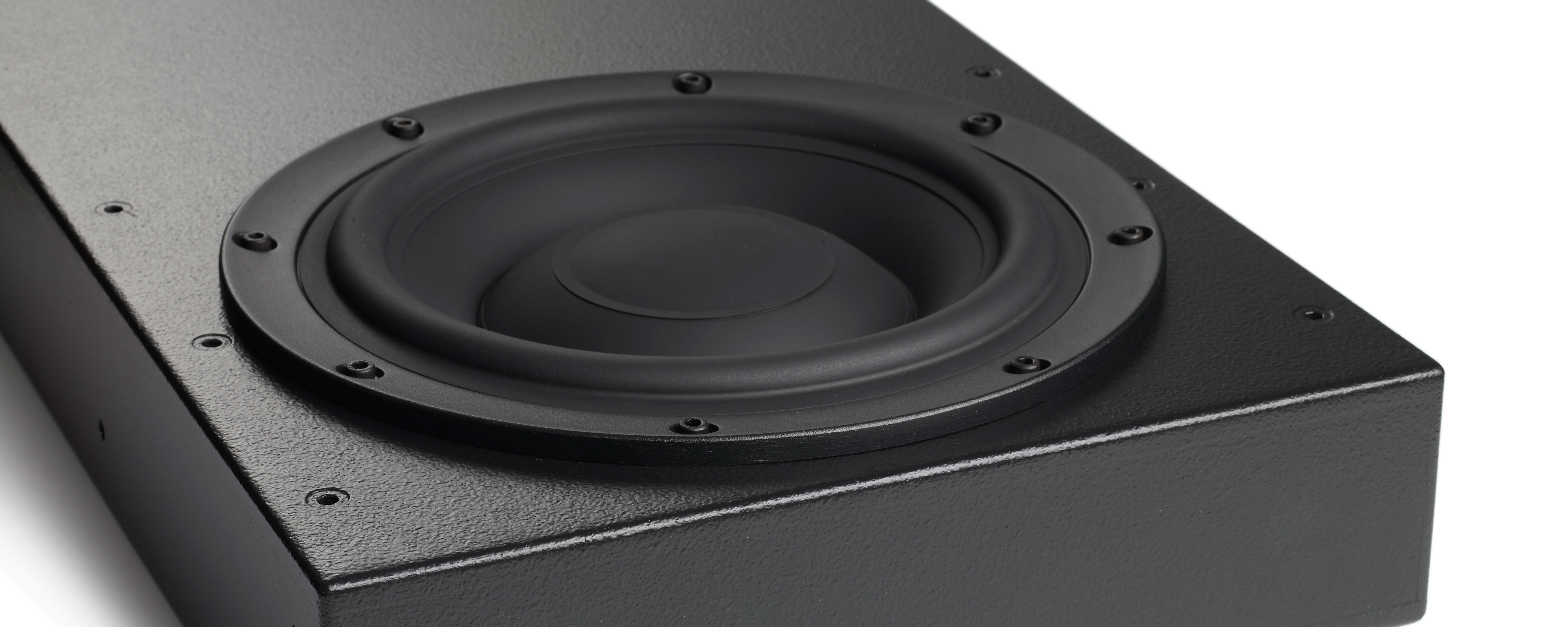One of the key elements of processor set up is the bass management feature. That’s the part where you tell the processor if you have ‘small’ or ‘large’ loudspeakers. But what do those settings actually do?
A ‘small’ speaker in this context means that it is bass limited. Bass limited is how we refer to speakers that can’t play the deep bass frequencies that are usually associated with larger speakers. ‘Small’ speakers typically won’t extend down below 80Hz.
The crossover setting is the filter that we apply to these small speakers to ensure that they aren’t sent bass energy they can’t play. Most manufacturers will quote a frequency response for their speakers and it is the low frequency part of that measurement we are interested in, typically 35-100Hz in cinema speakers.
What happens to this filtered bass energy? Well it isn’t thrown away, it is instead sent to the LFE channel and in turn to the subwoofer(s). If it isn’t thrown away, why would we even bother to have a large setting in the processor? We could just use small speakers all round and send all the bass to the subwoofer and be done with it, right?
Well, there are several benefits with running large speakers in a cinema, especially if they have a lot of power and headroom. Just as we would use multiple subwoofers to break up the standing waves (this will be discussed in more detail in a later blog), having bass coming from multiple points in the room will give us a more even response, with less seat to seat variation.

Whilst the recommended crossover for most systems is 80Hz, we are still quite sensitive to bass directionality, instead of using additional audio cues to place where the energy should be coming from. In the best systems I have heard, running large, full range speakers always sound much more natural and cohesive.
Part of the reason for this is that our brain doesn’t have to ‘guess’ where the bass is coming from. Without any bass management, you get a much better sense of scale, power and precision in the bass region. The other reason is that it frees up the subwoofer to just handle that important ‘.1’ channel on multichannel sound tracks. Free from the responsibility of bass redirection, the subwoofer also gains more head room and precision. The final improvement comes from having low bass energy being put into the room from more locations, overlapping the standing waves and minimising variation in different listening positions.
In the real world, that leaves us with a couple of options. One is to simply use large speakers all round for the bed layer of audio. This isn’t always practical as the space that large speakers require is often more than 500mm in depth and sadly it’s not always possible to accommodate this.
The other option is to partner each in-wall speaker with an in-wall subwoofer. This is a really elegant way of creating multiple full range channels in a slim mounting depth. This type of configuration will enable to you to use full range LCR’s and surround channels (assuming the clients budget permits!), giving an incredibly realistic bed of audio with superb panning of bass energy around the room.
Of course, you should still utilise a subwoofer or four for the LFE channel…
If you’d like some support on specifying a cinema, please feel free to get in touch with our Design and Specification Service team by sending your project details to design@distributedbym.co.uk